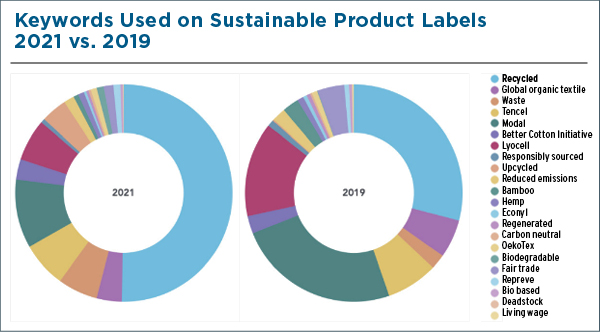
The latest fashion trends? Persistent | supply chain
As fashion supply chains become greener, sustainability is more important than ever, according to a report from the intelligence platform. The biggest change is the number of products labeled "recyclable" or "contains recyclable materials" (see chart), which now account for 51% of sustainable products, compared to 29% in 2019. Highlights of the report show:

- Stay away from cotton. The fashion supply chain's over-reliance on cotton has led to environmental impacts that threaten natural resources. Retailers must move beyond traditional materials to create more responsible apparel. Compared to 2019, U.S. products containing Quality Cotton Initiative cotton increased by 190%.
- Repurpose unsold inventory. This is critical for managing waste during the post-pandemic buying and discarding process. Backed by Gen Z, the used market is expected to be worth $64 billion by 2024.
- Beyond clothing. Working from home has led to an upgrade of home space, with 97% of consumers interested in purchasing eco-friendly household items. 87% of respondents are willing to pay more if cost and style are comparable, creating a visible demand for sustainable products in every retail category.
- Education is imperative. To encourage consumers to dispose of clothing with the planet in mind, retailers need to provide education and incentives to recycle or return used merchandise to improve circulation. 72% of U.S. consumers are aware of environmental concerns in fashion, but 42% are confused about the sustainability of clothing.
- Tighten sustainability timelines. What companies do over the next five to ten years will be critical. To achieve net zero emissions, retailers need to improve their processes at every point in the value chain, not just offset emissions.





Leave a comment